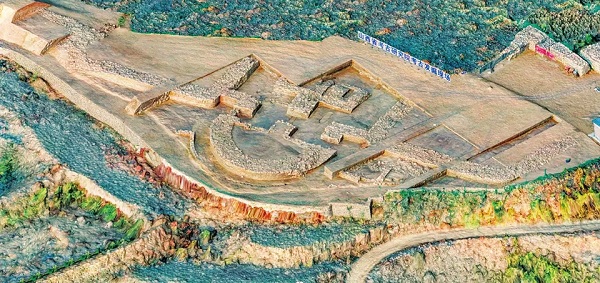Bicun site in Shanxi listed among China's top 10 archaeological discoveries
Updated: 2023-03-29

Xiaoyuliang stone buildings at Bicun site, Xingxian county of Lyuliang in Shanxi province, which date from 2200 BC to 1700 BC. [Photo/Shanxi Daily]
Bicun site in Xingxian county, Lyuliang of North China's Shanxi province, was listed among the top 10 new archaeological discoveries of 2022 on March 28. The site was jointly excavated by the Shanxi Archaeology Academy, Peking University and Shanxi University.
The list was released by the National Cultural Heritage Administration.
The site is located in northern Bicun village in Xingxian county, Lyuliang city. The main part of the site was in use from 2200 BC to 1700 BC. Its layout shows that it developed eastward from the entrance toward the Yellow River. It was built in Xiaoyuliang in 2200 BC and reached its zenith in 2100 BC, when the site was developed into a large stone city settlement with an area of 750,000 square meters. Ultimately, it began to decline around 1900 BC.
The discovery of the site has revealed the architectural layout of the core area of the northern stone city during the Longshan period (about 3000-2000 BC) for the first time, as well as a relatively clear central axis and symmetrical design concept.
As one of the main regional centers of its time on the east bank of the Yellow River, the site is also the largest prehistoric ruins found on the east bank of the Shanxi-Shaanxi Gorge, demonstrating characteristics of the military fortification and offering crucial insights into the political structure and civilization of the region on both sides of the Yellow River.



